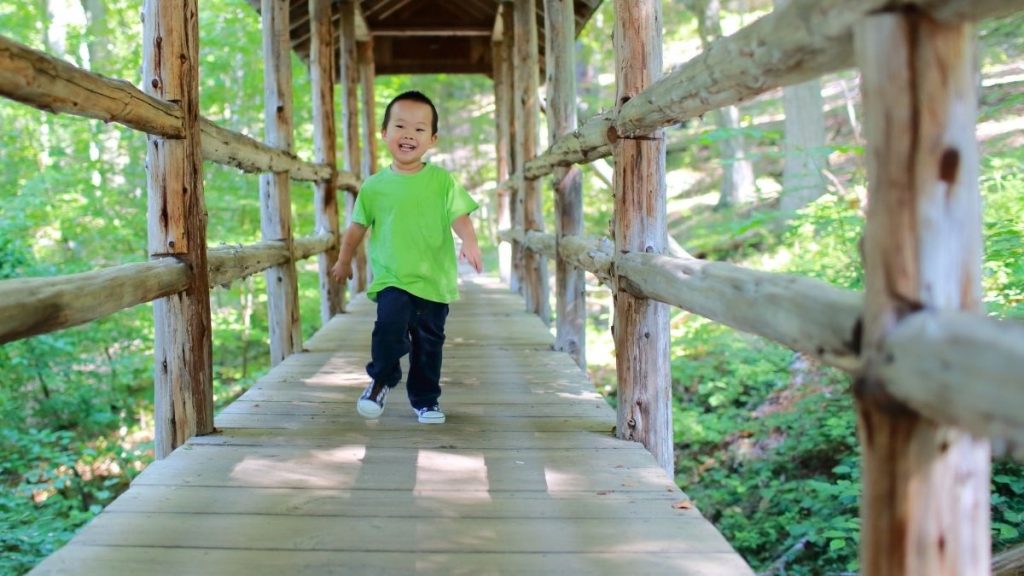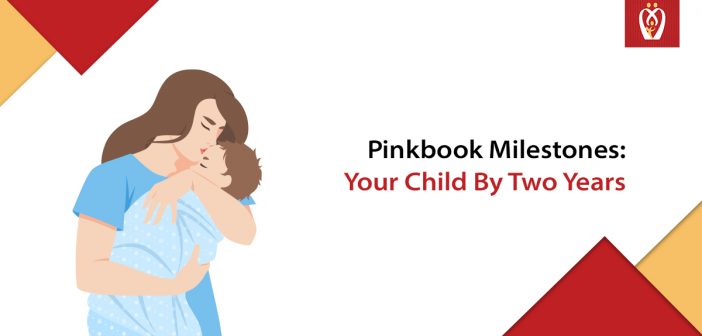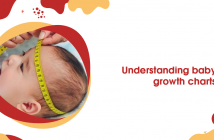Introduction
Your child has turned two with a blink of an eye and has grown so fast. Calling them terrible twos because your child only wants to say no all the time. But this is also the time when your child is developing their personality and develops into a toddler, crawling furiously, walking, and even talking. For the next few years, they will be spending a lot of time testing the boundaries set by your rules as well as her own physical and developmental constraints.
Learning and understanding the different milestones that the child reaches is an integral part of your parenting journey. With Nurturey PinkBook, we make this easier for you and this guide will give you an insight into child development that takes place by the time they are two years old.

Pinkbook milestones: Your child by Two Years
The child should be able to do the following activities:
- Stand on your toes.
- Kick a ball around.
- Begin to run.
- Climb onto and off of furniture without support.
- Hold on as you walk up and down the steps.
- Toss the ball overhand.
Running, playing, sliding down slides, and climbing will all help them strengthen their motor abilities. In addition, it’s beneficial for kids to have time to go outside and explore each day. This will allow children to enhance their motor abilities while also having fun and letting off steam.
Hand movement- Your child should be able to do the following:
- Freely scribble
- Turn a container over and empty the contents.
- Build a four-block skyscraper or more.
Your child can now turn a doorknob or unscrew a jar lid by coordinating the movements of their wrist, fingers, and palm. Even if the grasp may appear unnatural to you, they can hold a crayon or pencil. Even so, it’s sufficient for children to begin drawing lines and circles on a piece of paper.
Their attention span will be much longer than it was at 18 months, and now that they can turn pages in a book, they will be able to participate more actively when you read to them. In addition, they’ll be entertained for a long time if they draw, build with blocks, or use a construction set.
The following are things your kid should be able to do:
- point towards objects or pictures when named.
- Know your parents’, siblings’, bodily parts’, and object’s names.
- Make a two- to four-word sentence.
- Follows Simple instructions
- Recite words from a discussion that you overheard.
Your 2-year-old will most likely be able to form lengthier phrases. They’ll also begin to refer to themselves by pronouns “I” and “me” rather than their full name. Because not all children speak at the same rate, don’t worry if your friend’s child speaks more than yours. Boys also tend to speak later than girls. Your kid understands more than they can express at this age.
Continue to engage them, particularly by letting them know what’s coming up later in the day and when an activity is about to end. Talk and read to your child to help them with their language skills. Use books that require kids to touch, name, and repeat words.
Social and emotional development– Your child might be able to:
- Adults and older children, in particular, copy others.
- Get pumped up when you’re with other kids.
- Demonstrate your rising freedom.
- Instead of playing with other kids, you should spend most of your time playing with them.
- Demonstrate growing defiance (doing things you told them not to do)
Children think that the world revolves around them at this age. Sharing is a concept that is difficult to grasp. your child can play with their peers but they should be ignored unless they are attempting to steal an object from them. Children enjoy imitating others, and they may speak to their teddy bear or doll in the same way that their parents do. That’s just another reason to set a good example.
Learning and thinking skills- Your child should be able to do the following:
- Even if anything is hidden beneath two or three layers, you may find it.
- Begin by sorting the shapes and colours.
- In well-known works, there are complete phrases and rhymes.
- Play easy pretend games.
Your child’s linguistic skills are improving, and they’re beginning to solve issues in their heads. They’re also starting to grasp time ideas such as, “After we brush our teeth, I’ll read you a storey.” They’ll begin to grasp the notion of numbers, allowing you to begin counting. Their play will grow more complicated, and instead of moving from one object to the next, they may create an elaborate setting for one specific toy.
How does Nurturey Pink Book help in tracking developmental milestones?
With Nurturey Pink Book, be assured that your child is achieving growth milestones at an average pace. Nurturey Pinkbook tools will alert you to keep track of milestones that are due. It is also easy to keep track of overdue milestones that might require your attention. It helps you track over a hundred cognitive, social and physical developmental milestones in the first five years and beyond. Nurturey’s collection of user-friendly tools will help you give your child the best possible start.







